Text
just realized i never posted this one! 🍂
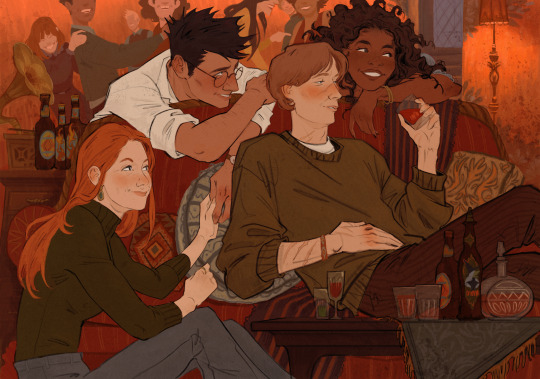
2K notes
·
View notes
Text
🌻price list update!🌻
commissions are open for a couple of slots — feel free to hit me up! it's my only income right now, so reposts are highly appreciated!! ty 🌟
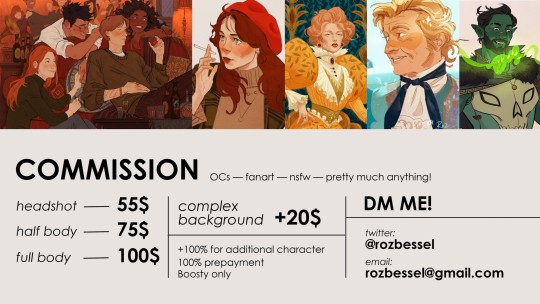
21 notes
·
View notes
Text

has anyone done this yet?...
77 notes
·
View notes
Text
Music and Sexuality in Our Flag Means Death
I, as well as so many of us on this hellsite have been forever changed by Our Flag Means Death. I haven’t been able to suppress my love (nor should I) for these characters, this storyline, etc.
What struck me the most, aside from their GLARING, STUPID LOVE FOR EACH OTHER, was the music throughout. The soundtrack curators, the composers, all did a wonderful job bringing their love out from the screen and embracing us in a wholly encompassing way.
I’m a classical musician, so I doubly appreciated the classical music peppered over the ten episodes. So I decided, for those of you who aren’t versed in the world of music, to create some sort of analysis. An analysis that, in its own way, will describe the juxtaposition between music and Stede and Ed’s relationship. I have also compiled the scenes in which the theme is present, for y’all to follow along. I’ll make note of each one. :)
Before we jump in, I’d like to talk a little about the very theme that’s utilized in almost every scene. This piece is Gnossienne, no. 5 by French composer Erik Satie, of the ‘Gnossiennes’ cycle. I encourage you to listen to the rest of the set. They can be absorbed altogether, but they can also stand independently from one another, bringing about different beauties.
Erik Satie was an eccentric and curious man, with notable aphoristic wit. He lived during a time where the avant-garde and surrealistic music styles were beginning to bud. The best way to describe surrealism and avant-garde styles is the ‘breaking away’ of rational thought, in order to transfigure human experience. Surrealism was something artists used to convey a more dreamlike world, almost like an alternate reality, while still maintaining visceral, tangible emotion. One could say that surrealism is this liberation from musical rigidity, like the supposed musical styles that came before.
I am someone that greatly appreciates the music from this period in history, between the early to mid 20th century. The artistry that flourished, the cerebral growth of society and how they ingested surrealism is something I have benefitted from during my professional life.
Satie’s music is indicative of the very freedom from musical intransigence. He lived a life outside the societal mold during that time, and was even deemed a charlatan by his musical contemporaries, for they weren’t able to fully comprehend his style and his wit. What strikes me about that, in particular, is this notion of living a life that is somehow not part of what everyone expects.
Just like Stede and Edward.
An upper crust nobleman that abandons his life of privilege to become a pirate?
A wholly revered pirate that wanted to break the monotony of his so called plundering and general swashbuckling, yearning for the days of high society and patrician pleasure?
These two men from the very beginning represent the rebellious ideal. They find the lives they lead aren’t enough, so the status quo must be changed. Then they meet each other.
In the very first scene I’ve clipped (episode 4), Ed picks up a small piece of cashmere and brings it to his face, feeling its softness. As he brings the cashmere to his face, the music begins. The introductory ‘love theme’, as it were. For the visual audience, here’s an excerpt of ‘Gnossienne’ no. 5:

(Here’s a lovely recording of this piece played in its entirety, if anyone wants to listen)
If you listen carefully, this is the part that’s played the most. In this transcription, you’ll note the piece is to be played ‘souple et expressif’, or ‘soft and expressive.’ Soft and expressive, indeed. Soft as the cashmere and as expressive as Stede’s eyes when Ed responds, “I think maybe I do.” You can see how enamored he is of Ed, even though he isn’t even yet aware it’s the inimitable Blackbeard.
This scene is lovely because Stede manages to invite this perfect stranger in to see his secret walk in closet. And even more lovely is Ed’s immediate willingness. Affascinato…
Whenever there’s a new scene between the two of them, the emergence of their theme changes, based on the emotional life in the scene. This piece has a calm feel to it, idyllic emotionality. When I find out who curated the music for this series, they will get a sloppy kiss on the mouth from me ;_;
The primary instrumentation used throughout their scenes together is strictly treble…piano, flutes and various strings. Lightly percussive, fluid instruments—it’s a wonder how anyone watching this show wouldn’t catch wind of these characters’ love for one another.
Another aspect of this piece I want to bring to everyone’s attention is the key. It’s in the key of G Major. Throughout music history, different keys were chosen to represent different emotional characteristics. It was a way to communicate what music was supposed to entail when it was listened to, composed and performed. Christian Schubart, a German poet/composer/journalist from the 18th century published the ‘Ideen zu einer Äesthetik der Tonkunst’, or loosely translated ‘Ideas towards an aesthetic of music’. This was a journal that described what each key ‘felt’ like emotionally. For G Major, translated from German, it reads:
“Everything rustic, idyllic and lyrical, every calm and satisfied passion, every tender gratitude for true friendship and faithful love,—in a word every gentle and peaceful emotion of the heart is correctly expressed by this key.”
Now if that’s not a vow, I don’t know what is. True friendship and faithful love. That is not to say every song, symphony and sonata portrays this exact feeling, but this journal was created as a subjective analysis of music during that time. And I think it represents Stede and Ed perfectly.
*
In the next clip, the theme starts up again (in the same musical iteration as the prior scene) when Stede wakes up Ed and offers him marmalade. You’ll notice the ‘fast friends’ vibe from both of them. I like the notion of breaking bread. Stede offers some food to Ed, as a way of inviting him in even more. There’s this apparent informality to it, which I find heart warming.
Ed’s verbal enjoyment of the marmalade prompts Stede to tell him how he acquired it. Ed looks back at him and echoes the self nominated title, “The Gentleman Pirate”…this scene is simple and yet otherwise wouldn’t hold any emotional weight without the Gnossienne in the background.
*
The next scene from Episode 5 is quite possibly my favorite Stede and Ed scene of the entire series, close second to the kiss scene. More on that later ;)
I thoroughly enjoyed the camera work in this scene. And the parallel between both Stede and Ed’s ‘flashback’ sequence is important, musically. When Ed thinks back to that moment with his mother, the mood of the music is in minor, with a dull sound from the harpsichord and slow strings as the instrumentation. You’ll notice the harpsichord emits a hollow, plunking sound, while the strings feel expansive, representing Ed’s recollection of that memory.
The music fades out when Stede enters the shot. Flashback to reality. Part of what makes this particular scene so special is the duration of silence. There’s this…weightless feeling underneath their feet, as they discuss what happened at the party. Everything Stede says is loaded. Reassuring Ed that he’s sophisticated. Consider the emotional state Ed is in leading up to this scene. He had his doubts about his sophistication and his place in high society, and the way the evening transpired surely justified those doubts. He was just ‘not those kinds of people’. But to hear Stede dismiss that entirely was beautiful. Stede very well could have said “You are more sophisticated than everyone on that ship”. So when Stede asks for the handkerchief, at this point, we are almost expecting the music to play. It’s a nice way to color the scene, especially because we are aware that there may be some sort of seduction going on.
The theme begins precisely at “Look at that”. This iteration of the theme is languid, as if each note is vying for the characters’ attention. Paired with the moonlight reflecting off their skin, it makes for such an intensely human moment. The instrumentation is different for the first time since we’ve heard the theme in the other scenes. It’s just piano. If you close your eyes and listen to this scene, you can hear the piano playing in the higher octave, which could represent the notion of ‘love is in the air’. It’s almost…effervescent.
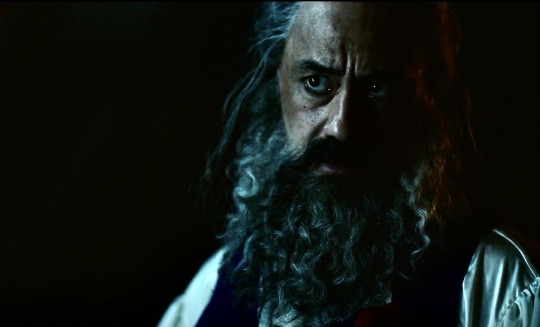
I’m reminded of a stunningly crafted piano trio by Debussy. It’s also in GMajor, like the love theme. If anyone is interested, the link is here. Pay attention to the second ‘voice’ (cello). That’s the melody. It’s delicate, isn’t it? I hope this piece can give you some insight into what, in my opinion, love sounds like.
And if Stede acted this way towards me, I’d certainly move in to kiss him, like Ed does. I could talk forever about this scene *sigh*…but alas let’s move to the next bit!
*
“Hey…I’m your friend.”
It’s that consistent reassurance from Stede that allows Ed to open up. The theme starts at this point. Again, the instrumentation varies from the other iterations depending on the emotionality in the scene, this time with low strings and a guitar playing the melody of the Gnossienne. The guitar provides an interesting flair to this scene. The “moonlight scene” was accompanied by piano, which is percussive and could represent the heartbeat quickening; whereas this scene is accompanied by a guitar, strictly string instrument, not percussive, but simply a representation of expression, and in this case, the expression of vulnerability. Ed is the most vulnerable he’s been around Stede thus far and Stede makes an active and compassionate choice to tell him he’s in good hands.
It’s those moments where you are getting to know someone, perhaps on an intimate level, and experiences and circumstances help you to see them in a different light—that’s exactly how this theme feels as the series progresses. It’s fluid and without restraint.
It’s also the first time you see Ed respond with physical touch, when he lays his head on Stede’s hand. You can see him breaking down the walls he’s had up for quite some time.
*
OKAY. The penultimate scene is now upon us! In literature, this would be considered the climax, whereas the following scene would be the denouement (more or less).
I’m sure my musician friends will agree with me, but I immediately sensed a shift in emotion by the time we got to this scene. Consider for a moment, our German journalist friend, Schubart—the reiteration of the ‘love theme’ is fused together with Schumann’s Träumerei. This piece is traditionally played in F Major, and the love theme has been transposed down from G Major to follow suit.
Schubart wrote that F Major represents “complaisance and calm”.
As I mentioned earlier in this analysis, there’s a parallel between the flashback sequences. Stede looks back on his life and you’ll notice that the music is sad, disconnected and in a minor key, as is with every moment he looks back on his old life. As soon as Ed enters the shot, the chord in the instrumentation resolves. It’s almost as if that chapter in Stede’s life has ended and Ed is perhaps a new chapter. The theme now becomes a bearing of the soul, as you can hear when Ed is about to tell Stede that he makes him happy.
Stede and Ed’s theme represents opportunity as much as it does love. In this kiss scene, the music appears in three instances— when Ed tells Stede how happy he’s made him, when they kiss, and when they think aloud their plans to run away together and start a new life. Opportunity. When they both realize that this is in the realm of possibility for them, the theme starts up again.
In the original Gnossienne, Satie keeps the piece in one key, with chromatic shifts here and there, but towards the end of this scene, there’s modulation, rising as Stede and Ed entertain the excitement of what’s to come. It’s the variation’s way of saying “Let’s go. Let’s do this. I’m ready to take this step, and never look back.” There’s this lovely urgency.
Schumann’s Träumerei was the 7th selection in his song cycle, Kinderszenen, or “Scenes from Childhood.” He composed this cycle of 13 songs in 1838. When his wife, Clara asked him why he named the cycle in this way, he recalled a comment made by her saying he sometimes acted ‘like a child’. This is always a lighthearted anecdote. If you listen to the rest of the cycle, you can hear Schumann honing in on the innocence of a child. That’s how I’d describe Stede and Ed’s love. Innocent. But pure and entirely compelling.
Träumerei translates to ‘dreaming’, but I think it’s a wonderful juxtaposition between what’s going through their heads/hearts versus what’s going on in real time.

My favorite part of this scene? When their lips touch, the music feels like home. It’s also the last time you hear the love theme, so you truly get this sense of grounding and resolution. It feels serious and important.
*
Though the theme isn’t present in this scene, I wanted to spend some time talking about it. Stede’s relationship with Mary peaks and plateaus in this same scene, which I find interesting simply for the fact that his marriage to Mary was one of convenience, not love. There was never anything for Stede to hold onto (I mean, his children are two examples of tangible things, but LOL).
Because Stede is in the scene with Mary, the music needed to be different. The piece you hear in the backdrop is Debussy’s “Rêverie”. Like Schumann’s piece, Rêverie quite literally translates to ‘daydream’. What I like about this scene in particular is when Stede reminisces about his time spent with Ed, this piece plays in the background. So you see, there’s this shift from sad recollection when he was thinking about Mary, to this uplifting, dreamlike wonder when he thinks about Ed. It’s a small shift, but I think it's an important one.

Mary asks Stede “What’s her name?” And when Stede answers “Ed. His name is Ed.”, the music resolves. Solidity. Solid as the realization that Stede loves Ed. It’s not this grandiose revelation. It’s Stede calmly confirming what he’s been feeling the last few months at sea. And he’s grateful, in that moment, to come to this realization because now, his mind is free from the emotional shackles placed on him during his time with Mary. Additionally, his mind is free from the shackles of false sexuality.
His happiness and love for Ed may have been a bit of a surprise, but when Mary hugs him, he’s relieved.
Now hear me out—I included the part of the scene where Ed is feeling this potential loss after Stede left. Like Stede’s reminiscing, Ed’s perspective is filled with the same part of the music. Which leads me to be hopeful, if this show is renewed for a second season (IT WILL BE MARK MY WORDS), because the final chord of Rêverie is a rolling F Major chord. Completion. Finale. We weren’t able to hear the last of this piece, because the story of Stede and Ed hasn’t been written yet. So, have no fear, friends.
One last thing I want to bring your attention to is that flashback parallel. Each man thinks back on their life in moments of stress or sadness and each has their own musical properties. I think these selections were composed for the series, so I am unable to cite them properly, but if you listen carefully, each piece is in G Minor, and it is known as the ‘parallel key’ to G Major, the love theme. It’s full circle. And it blows my mind. To connect things even more, Schubart wrote about G Minor:
“Discontent, uneasiness, worry about a failed scheme; bad-tempered gnashing of teeth; in a word: resentment and dislike.”
Uneasiness, discontent, resentment, are all perfectly indicated in these flashbacks. And what a treat to know that it’s the exact parallel to Stede and Ed’s love theme. When I pieced everything together, my music brain nearly imploded.
*
What I love so much about the curated music throughout this series is how big a role it plays in the characters’ inner thoughts and inner emotion. Music has a unique way of building a life for whatever it may accompany, and one could say the story arch for Stede and Ed is similar to musical form. Specifically, I’m referring to the musical structure known as ‘sonata form’. Sonatas are comprised of three distinct structural parts: Exposition, Development and Recapitulation.
I could easily parallel Stede and Ed’s relationship to sonata form. The exposition is the very first scene where they engage with one another. The development is their fast companionship and the recapitulation is an altered repeat of the exposition, only this time, they use a kiss as an introduction to something new and scary, but exciting and wonderful. This is all under the umbrella of Satie’s Gnossienne. It’s truly remarkable. And furthermore makes the case that music is rooted in love and vice versa.
Thank you for coming to my TED Talk. I hope I haven’t bored you all to death. But then again, I’m not Jeff the accountant.
@edwardbonnets
1K notes
·
View notes
Text
Bundle for Ukraine
The people of Ukraine are under attack. As game developers we want to create new worlds, not to destroy the one we have. That's why we've banded together to present this charity bundle to help Ukrainians survive this ordeal and thrive after the war ends. This cause has resonated with creators around the globe, to the extent that our bundle contains almost 1,000 games, tabletop RPGs, books, etc.
There's a charity bundle up on itch.io for Ukraine that contains nearly a 1,000 games, with all proceeds being split evenly between International Medical Corps and Voices of Children.
Please consider donating if you can, or by spreading the word! The bundle is up until the 18th of March.
2K notes
·
View notes
Text
wip 👁️👁️🍻

33 notes
·
View notes
Text
"i kiss you, you're beautiful"

123 notes
·
View notes
Text
another wip ✌️😩

42 notes
·
View notes
Text
wip 👁️👁️

#sirius black#sirius black art#marauders#marauders art#harry potter fanart#my art#all the young dudes
83 notes
·
View notes
Text
prongs

235 notes
·
View notes
Text
studiesssss ✏️
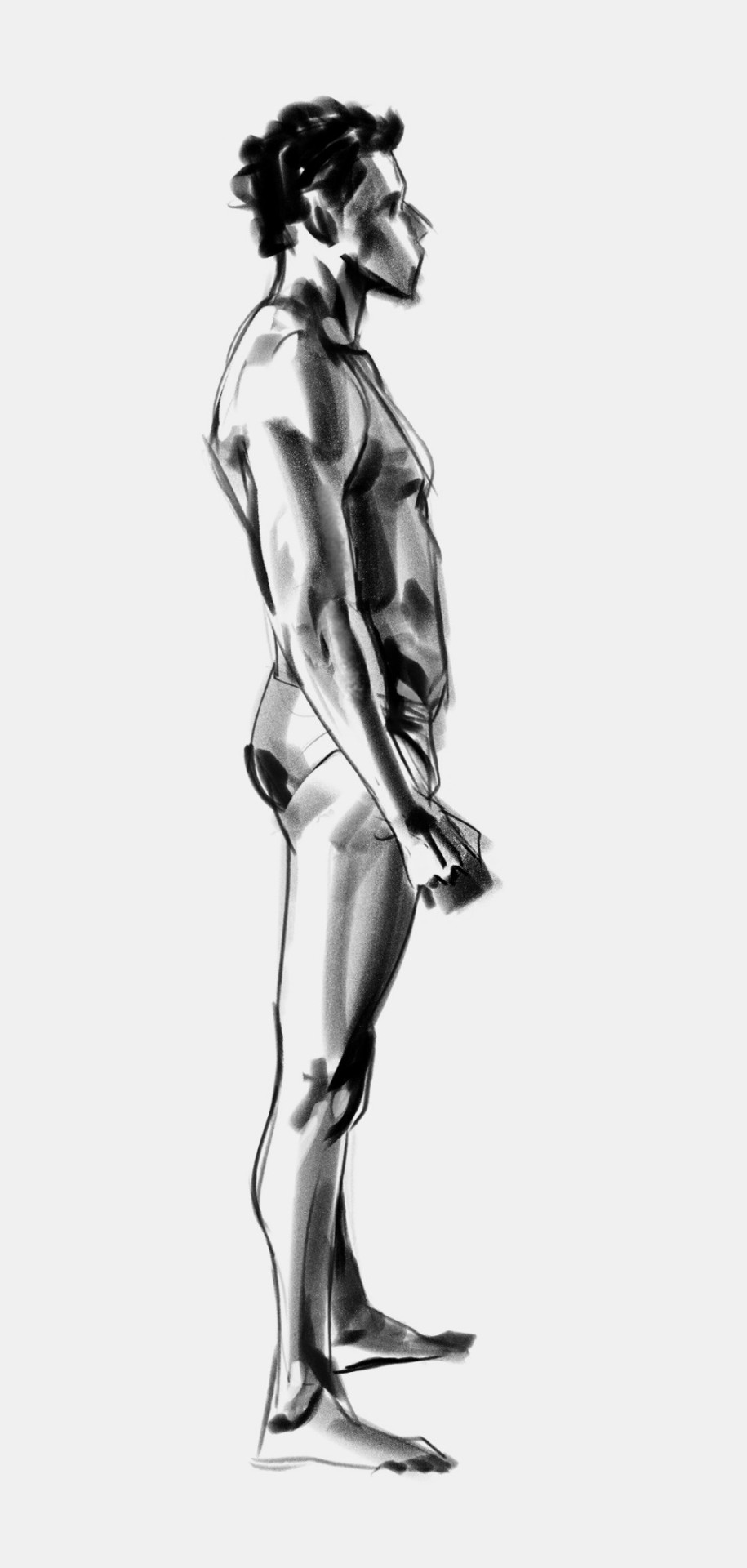

28 notes
·
View notes
Text
hiya, i'm alive!! it was a lil bit hard trying to stay in a good place mentally this month for a particular reason, but i'm back and I got a lot of stuff to show you guyzzz! 💪💪💪
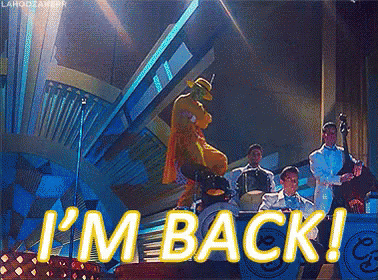
4 notes
·
View notes
Text
oc commission of Elinor for Ursa!🌙

11 notes
·
View notes
Photo
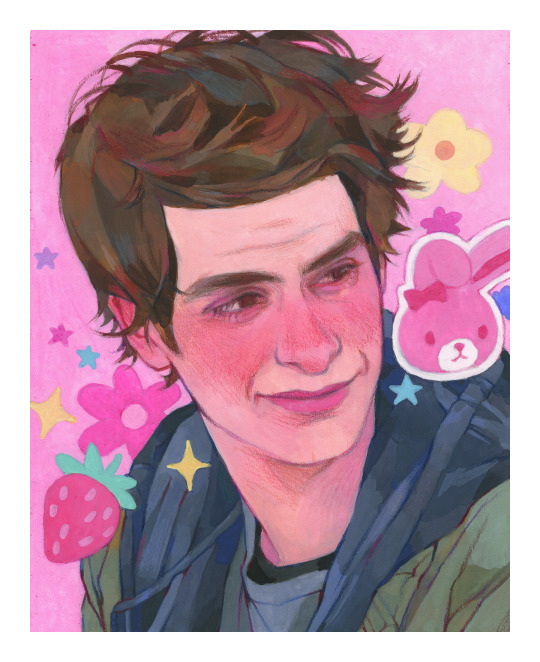
I’m having so much fun with this !!! Still critical af and want everythinh to took perfect, but I’m trying to learn how to let go and move on :)
added prints of this one to my shop cause it’s too cute
164 notes
·
View notes
Text
"sometimes i dream of saving the world"

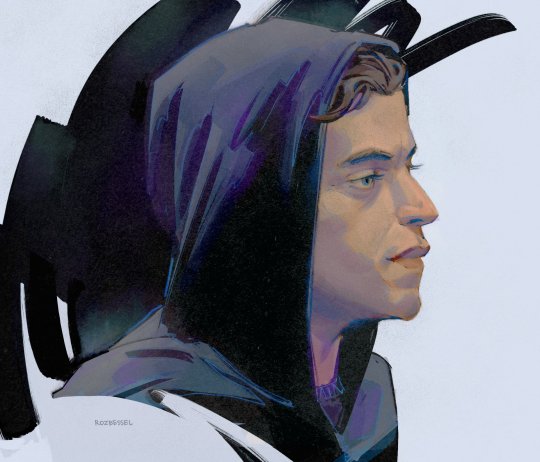
411 notes
·
View notes
Text


commission of the amazing Kazimir for @/rogerthatcapt (on twitter) ✨🌻
17 notes
·
View notes
